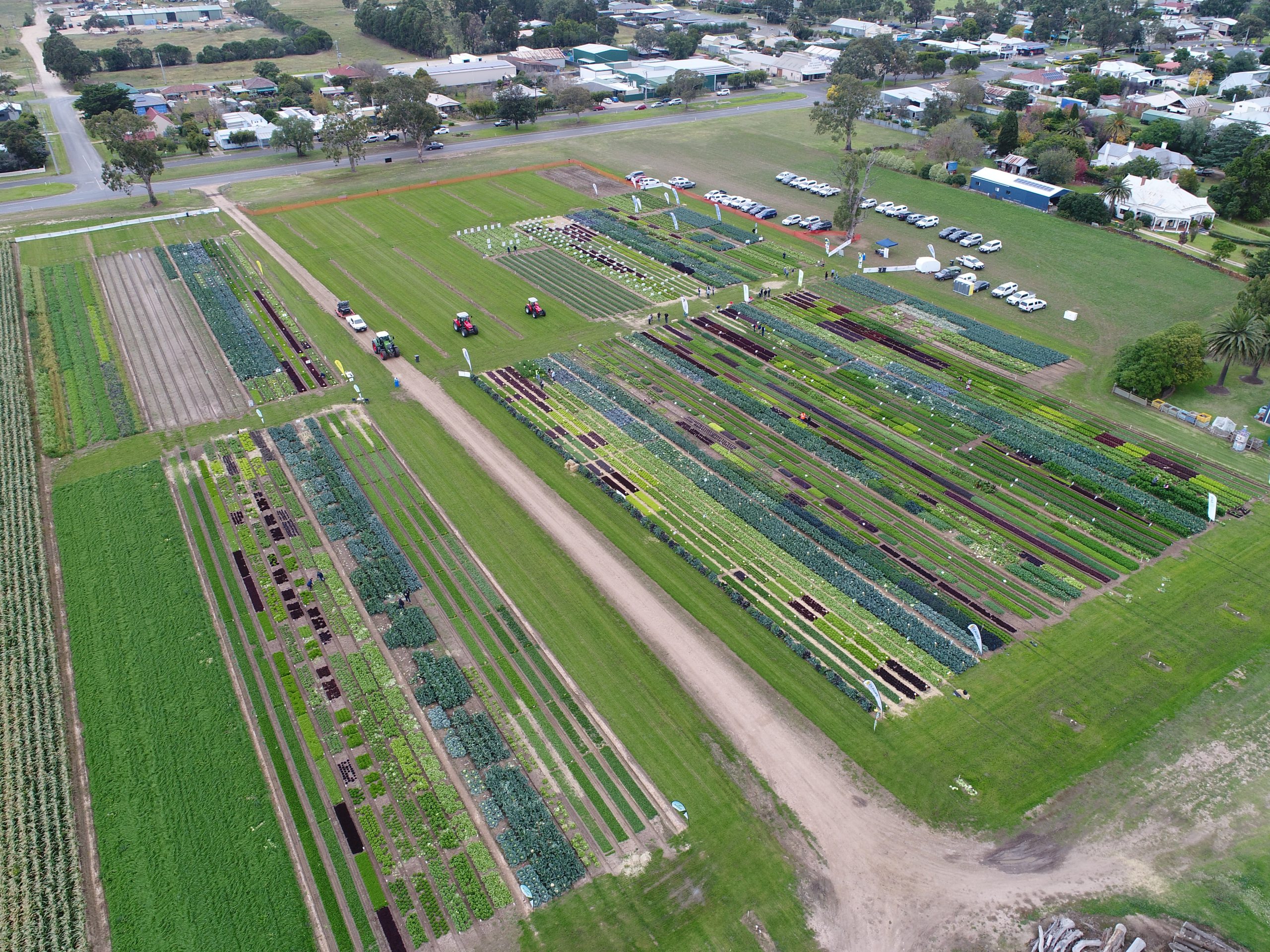
Digitisation of East Gippsland Vegetable Innovation Days
1 July 2021
Victorian potato grower Xavier Toohey named Corteva Agriscience Young Grower of the Year
5 July 2021Project VG16009 was led by Julie O’Halloran from The Queensland Department of Agriculture and Fisheries.
Major findings
From 2016 to 2020, Project VG16009 was undertaken with the goal of assisting the Australian vegetable industry to adopt precision agriculture technologies. This project involved research into high resolution satellite imagery of vegetable crops, as well as the establishment of case-study farms in each state where research and extension could take place. A comprehensive literature review of the ways that precision agriculture (PA) technologies can assist vegetable growers was also produced.
Lead researcher Julie O’Halloran explained that the case study farms were established with co-operating growers around the country to show how a range of commercially available PA technologies can be used in vegetable growing.
“For an industry with few examples of applying PA technologies, these demonstration sites and case studies were critical for increasing awareness and having industry-relevant examples of PA implementation,” O’Halloran said.
The technologies implemented across the demonstration sites included a range of soil mapping technologies (EM38 mapping, soil grid mapping for pH and nutrients, SIS soil mapping, Veris soil pH mapping), yield monitoring, drone technologies and satellite imagery.
“We tried to establish sites that would utilise a range of different technologies and also different applications of the same technologies,” O’Halloran said.
“At each site, the technologies used were based on the issues identified by the grower, or technologies that they might have heard of and were interested in seeing how they could be applied to their farming system.”
Throughout the project, a range of communication outputs were generated, including case studies, factsheets, videos and webinars, which served to provide industry-specific information on how these technologies can be utilised by vegetable growers. These outputs addressed some of the preconceptions and doubts that existed among those in the vegetable industry.
Recommendations
O’Halloran explained that there were several key findings and recommendations to come out of the project.
Firstly, it was found that precision agriculture approaches can be utilised by the vegetable industry in identifying, quantifying and managing spatial variability across fields and farms. The project confirmed that sufficient variability does exist in vegetable systems to warrant these approaches.
Secondly, yield prediction from crop sensing imagery was found to be a real opportunity – particularly for those crops that don’t have access to yield mapping technology and to assist with marketing. Results from the research showed that yield could be predicted with 74-99 per cent accuracy across sites.
“These results highlighted the potential to use high resolution satellite imagery, or any crop sensing imagery, to predict yield prior to harvest,” O’Halloran said.
“This is important for an industry that currently doesn’t have a lot of yield mapping options, as many of the crops are hand harvested, and yield mapping technology is not readily available for mechanically harvested crops; and where yield information in advance of harvest can be beneficial for marketing and supplying contracts.”
Discussing further recommendations, O’Halloran noted that there are some low-cost technologies that can be implemented relatively easily, which can assist growers to get started in PA.
She advised that PA adoption in vegetables should be implemented to target a specific issue rather than focused solely on the technology, as well as explaining that regional support networks are critical for PA adoption, including a network of PA service providers and extension support.
Background
Prior to this project, R&D investment into PA in vegetables had been limited to some state- and regional-based projects and desktop studies. O’Halloran noted that PA adoption has been relatively low across the vegetable industry, in part due to perceptions in the industry that PA approaches are only applicable to more extensive broadacre industries, such as cotton and grains, rather than intensive vegetable growing.
Many in the industry also believed that PA technologies are prohibitively expensive to implement. O’Halloran found a general lack of awareness of what technologies were available, how they could be applied to vegetable systems, and where to start. Project VG16009 represented the first national industry investment into PA technologies in vegetables.
O’Halloran said there is a real opportunity now to build on the foundation and momentum initiated by this project.
“As the outcomes and value of PA can require longer time frames to assess – such as yield and profitability benefits from variable rate soil amendments – then some sort of ongoing investment would allow for greater capture and quantification of these benefits over the longer term,” she explained.
“There is also an opportunity to facilitate ongoing communication through the community of practice initiated by VG16009. Continued extension and industry communication in this area will be required to support further adoption.”
Acknowledgements
This project was funded by Hort Innovation using the vegetable research and development levy and contributions from the Australian Government.
Further information
Please contact Julie O’Halloran at julie.ohalloran@daf.qld.gov.au. Project factsheets and case studies can be found here.
Videos produced from project VG16009 include:
This story featured in Vegenotes 81 – Winter 2021. Want to read more? Click here to access the full catalogue of AUSVEG publications. If you would like to receive hard copies of any publication for free, click here to subscribe!
